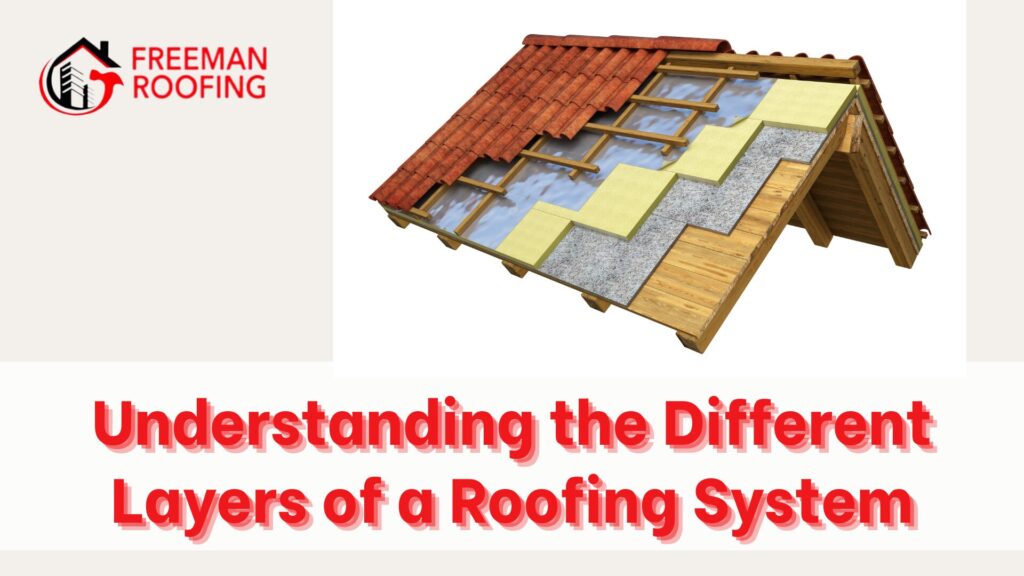Understanding the Different Layers of a Roofing System

Roof Framing
The foundation of any roof is its framing. This structural framework, typically made of wood or metal trusses, gives the roof its shape and supports the weight of all roofing materials. The triangular design of trusses helps distribute weight evenly, ensuring structural stability with every layer.
Roof Decking (Sheathing)
Attached to the framing is the roof decking, usually composed of plywood or oriented strand board (OSB). This layer provides a solid surface for other roofing materials to adhere to and acts as a structural base for the entire roofing system.
Ice and Water Shield
In vulnerable areas prone to water infiltration, such as eaves, valleys, and around chimneys, an ice and water shield is applied. This self-adhering membrane prevents ice dams and heavy rainfall from causing leaks, safeguarding the underlying materials from moisture damage.
Underlayment
Covering the entire roof deck is the underlayment, a water-resistant or waterproof barrier that provides an extra layer of protection against moisture. Materials commonly used include asphalt-saturated felt or synthetic membranes. The underlayment ensures that any water that penetrates the shingles doesn’t reach the roof deck.
Roof Flashing
Flashing consists of thin metal strips installed around roof features like chimneys, vents, and skylights. Its purpose is to direct water away from these intersections, preventing leaks in areas where different roofing materials meet.
Roofing Material
The outermost layer, visible from the ground, is the roofing material itself. Common options include asphalt shingles, metal panels, tiles, or slate. This layer serves as the primary barrier against weather elements, contributing to the roof’s aesthetic appeal and overall protection.
Ridge Vents
Installed at the peak of a sloped roof, ridge vents allow hot, humid air to escape from the attic, promoting proper ventilation. This ventilation helps regulate indoor temperatures and prevents moisture buildup, which can lead to mold growth and structural damage.
Insulation
Beneath the roof deck, insulation plays a crucial role in maintaining your home’s energy efficiency. It helps keep your home warm in the winter and cool in the summer by reducing heat transfer through the roof.
Ventilation
Proper ventilation systems, including soffit and ridge vents, ensure a continuous flow of air through the attic space. This airflow prevents overheating and moisture accumulation, extending the lifespan of your roofing materials and improving indoor air quality.
Bottom line
Each layer of a roofing system plays a vital role in protecting your home from environmental factors and ensuring structural integrity. Regular maintenance and inspections can help identify issues early, preserving the functionality and longevity of your roof.
